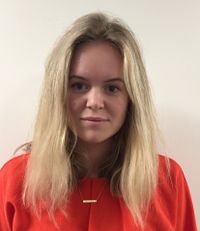‘I’m a professional dancer – I just happen to have Down’s Syndrome’
How a career as a performer has given one woman independence and confidence


How a career as a performer has given one woman independence and confidence
As a child, 26-year-old Hannah Sampson dreamed of becoming a dancer. Then, as a teenager, she found out about Stopgap, a groundbreaking integrated dance company that employs disabled and non-disabled dancers. Here Hannah tells us how working for the company has changed her life.
'I’ve always got a buzz from performing. When I was five-years-old and ‘Tragedy’ by Steps came out I’d do the routine for my family on the living room carpet, singing along to the words. I was a bit of a crazy kid who wanted to be a superstar, but I never imagined I’d grow up to become the professional dancer I am today, who gets to teach, choreograph, perform and travel the world – it’s my perfect job.
I first found out about Stopgap when I was 13 and they came to do a workshop at my local youth group in Surrey. Stopgap is an integrated dance company that mixes disabled and non-disabled performers. I did some work experience with them, and after attending Kingston College to study Performing Arts and get a BTEC First Diploma certificate, I joined the company as an apprentice at the age of 19. Two years ago I became a full-time dancer.
Every member of the company is different but equal; we all work together and support each other, and because of that we’re very close, like a family. If I meet someone new and tell them I’m a professional dancer they don’t always understand, but then they come to see a show and have lots of questions about what I do.

Contemporary dance is all about telling stories. Everybody works differently, but I find the ideas come best for me once I’ve started moving. It feels like my body is waking up and I get a clear picture in my head of where I want the piece to go. I also think it’s important when you’re performing to pick up the reactions of the audience - it’s really a two-way process. You want people to relate to the dance. For example, there's a piece I choreographed called 'Calling Of You’ - about a young girl who dreams of being a dancer when she grows up – which I hoped people who wanted to perform could connect with.

On my bedroom wall are framed posters of all the shows I’ve danced in. I’ve also travelled to lots of different countries on tour with Stopgap, from Palestine to Albania – it was a bit chaotic when I went abroad for the first time but I loved every second of it. Being a part of Stopgap has really increased my confidence. When I started I had so much to learn, but now I feel happy to work and spend time away from home.
Celebrity news, beauty, fashion advice, and fascinating features, delivered straight to your inbox!

I’ve been told that I’m building bridges and changing perceptions of people with Down’s Syndrome. When I was born, my parents were worried that I wouldn’t have a life without support, but I want to show through my dancing what other people can do. I don’t see myself as disabled. Though I sometimes need help, I can do most things independently. I’m a professional dancer - I just happen to have Down’s Syndrome.'
